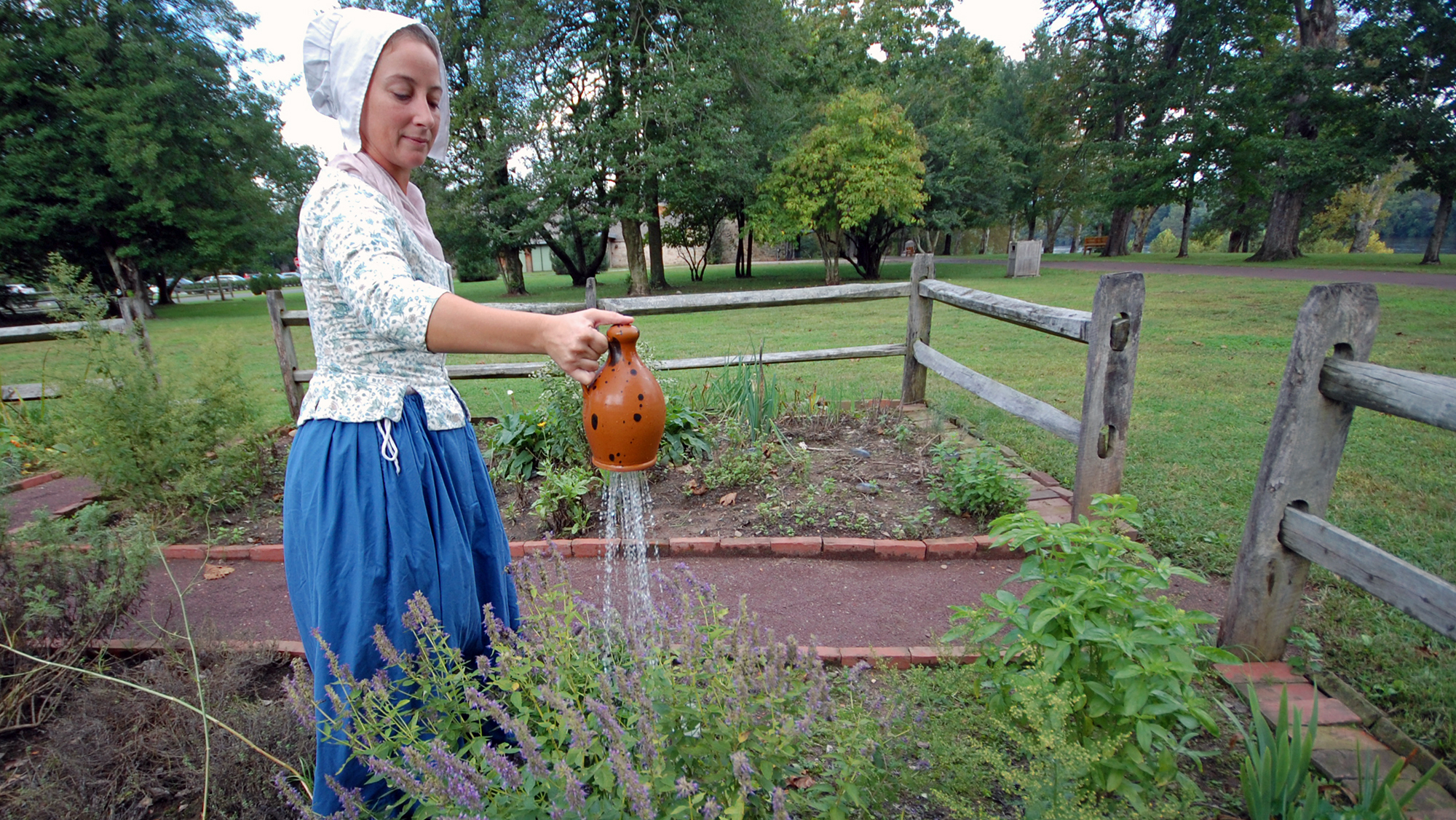
Many modern-day Pennsylvanians grow vegetable, herb and flower gardens, but few of us rely on them to stock our pantries or medicine cabinets. For families in colonial-era Pennsylvania, however, the kitchen garden was an important aspect of day-to-day life and a necessary source of food and medicine.
Let’s explore how a colonial-era family used their gardens and what a typical day of garden work entailed.
A Woman’s Work
In the spring, summer and early fall, it would be common to find a colonial Pennsylvania woman tending her kitchen garden in the early morning. The kitchen garden – a small plot of land beside her home – contained numerous beds with herbs and vegetables.
“The kitchen garden was more the female’s wheelhouse,” explains Anna Davis, Washington Crossing Historic Park’s historical horticulturist. “Both men and women worked together on some aspects of gardening,” Anna says. “Men would lay the beds and hoe them in the early season. But choosing what to plant in the garden, the tending, and the harvesting was done by women.”
The woman of the house was responsible for the garden’s daily maintenance. Tending work included harvesting herbs, pulling weeds, and checking for mold and pests. Just like on a larger farm, pests were a constant threat. Poor soil, sudden freezes, drought, or overwatering were other common reasons that crops would fail.
Passing on Knowledge
If the woman of the house had a daughter, she might accompany her mother in this work. Sons would join in while young, but once they were old enough, they would instead help the man of the house with farmstead work. Daughters, who would one day have kitchen gardens of their own, would stay on to continue learning.
In this way, gardening skills and the medicinal properties of the plants in the garden were passed from mother to daughter.
“Skill levels varied from woman to woman in applying plants medicinally, but many women knew at least some plants that could be used as a medicine,” says Anna. “Everybody knows how to tie a poultice or a bandage at this point.”
Women also worked together when problems arose. With no pesticides on hand to keep insects at bay, pest control would have been done by hand. An extra pair of hands – a neighbor, perhaps – would have made it easier to catch all of the insects.
Cooperation among gardeners was common to ensure that if one person’s crop fails, someone nearby has a supply. Neighbors commonly traded or offered extra seeds to each other, and more advanced gardeners would offer advice and techniques to those who were less advanced.
Storing the Harvest
If gardening was successful, herbs and vegetables were plentiful. Any vegetables that wouldn’t be used right away could be stored in a root cellar or basement in order to preserve them for later use.
Herbs were dried and stored for teas, medicine, and seasonings, as well as for winter use.
“You could get anything fresh in the summer, spring, and fall,” Anna says. “But you needed something to carry you through the winter, so it would’ve been really important to maintain a good environment for drying those plants so they would last as long as possible.”
To see a recreation of a kitchen garden accurate to eighteenth century Pennsylvania, plan a visit to the Hibbs House Kitchen Garden (Lower Park) or the Thompson-Neely Farmstead Kitchen Garden (Upper Park). Learn more about the gardens at Washington Crossing Historic Park.

